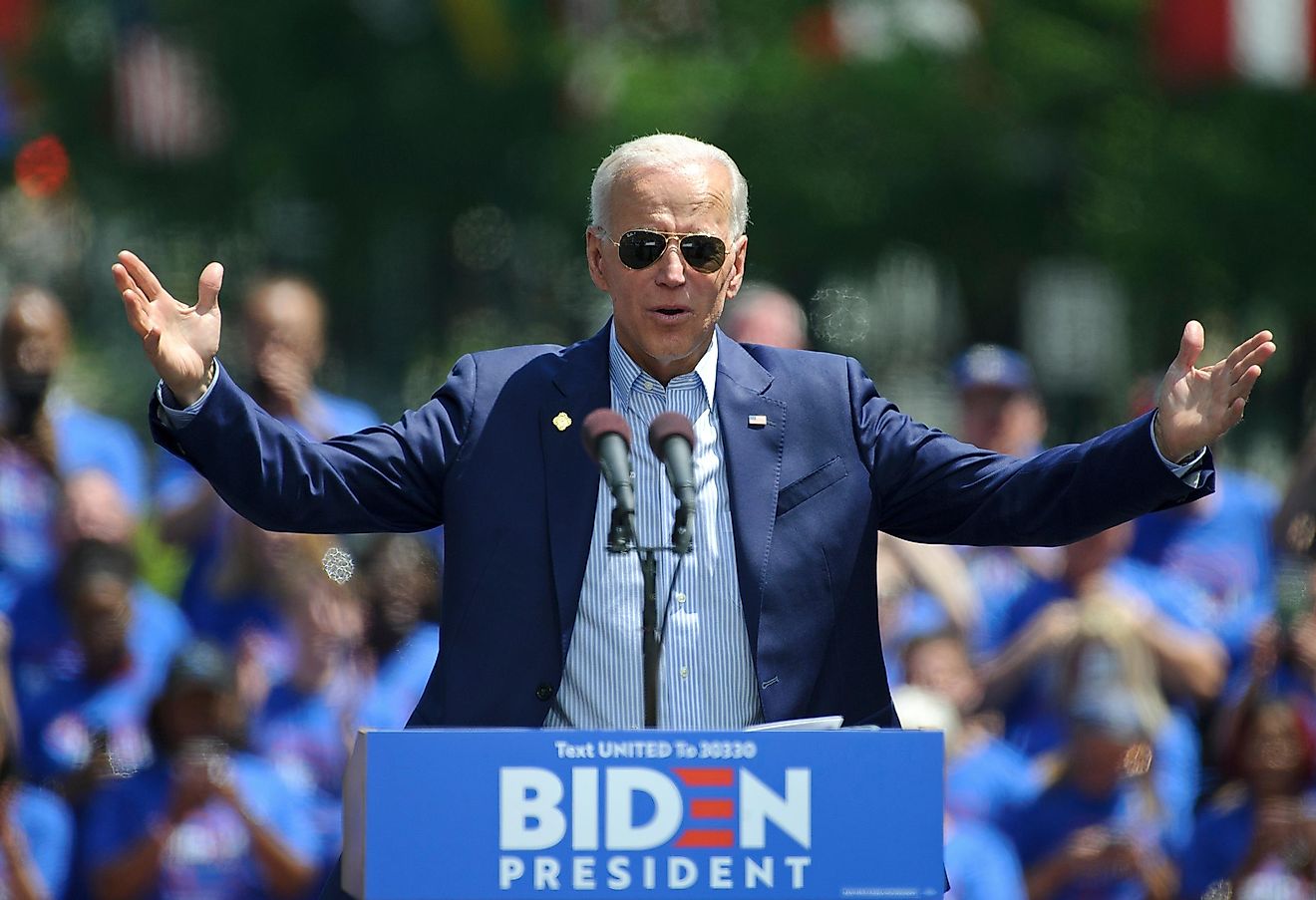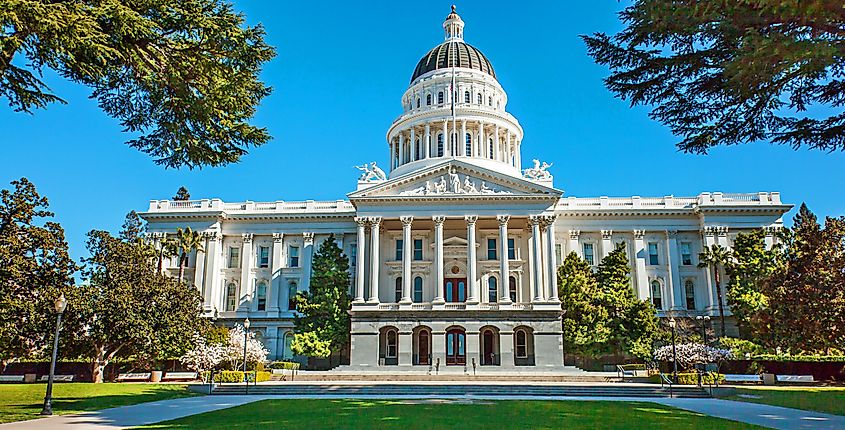States That Are Key To A Democrat Party Victory

- New York State has voted Democrat in federal elections since 1988, making it the longest standing blue state.
- California has been a blue state since 1992.
- Bill Clinton's victory was a turning point in voting patterns in the US.
The American political system is dominated by two parties, the Democratic Party and the Republican Party. Each party can win a minority or majority in both Congress and the House of Representatives. The split between the House and Congress dictates how easily each party can pass legislation, and each are meant to provide checks of power over the other. The way that the American system works means that there are critical states that each party relies on winning in elections to ensure victory. Other states are classified as "swing" states, meaning that they are less predictable in their political leanings but can sway results depending on which way the popular majority votes. The Democratic Party relies on states with a higher concentration of liberal voters, like California. Other bastions of Democratic support include New York and Illinois. The Democrats need these blue states to win a federal election - the chances are good that if one of the key Democratic states ended up voting Republican, the Democrats would lose the federal election. Conversely, Republicans also have certain red states they count on.
California

California has a storied and colorful US political history, beginning in 1850 when the state joined the Union as a part of the Compromise of 1850. Until 1988, California was a Republican-dominated state from a voting perspective. Post-war political leanings are considered to have led the Republicans to victory in California and ushered in wins from candidates like Richard Nixon. Republican support flagged in California until it was briefly extinguished by Lyndon B. Johnsons' defeat of Barry Goldwater in 1964. The Republican Party had found success in putting forward candidates who were moderate but strongly anti-Communist, and Goldwaters' leanings were too far right for the increasingly liberal state. California would not become a reliably blue state, however, until 1992. Bill Clintons' victory in the Golden State marked the beginning of Democratic Party dominance in California.
Illinois
When the conversation turns to the 'most' Democratic states, you can bet Illinois will make the list. Illinois is similar to California in that Bill Clintons' victory marked a pointed turn to the Democratic Party for Illinois voters, leading to the state being referred to as one of the "big three" for the Democrats, along with New York and California. Illinois carries a high concentration of electoral votes, with 20 allotted for the state, based on population. While the Republican Party does put up an occasional victorious candidate, this is considered to be a fluke, and the candidate is not expected to win re-election against a Democrat. In fact, Illinois largely sees Democratic control of all six of its main political offices. This is beneficial, at least on the surface, because it gives Democrats the ability to govern efficiently, with less vying for power between parties. However, it also puts a spotlight on the pace of progress - with no obvious opposition in government. Theoretically, things should run more smoothly than states with government roles divided between the two parties. If they don't, we get the opportunity to study the system and intricacies of party politics.
New York

New York State has voted Democrat in federal elections since 1988, making it one of the "big three" Democratic states that the party relies on to win federal elections. New York state is a political curiosity in the sense that it has a large population of very affluent Americans, and, outside of New York City, is also a largely rural area. Both of these factors frequently produce Republican voters due to perceived social and fiscal values, and yet, New York state has been a Democratic stronghold for over three decades. The answer to this is an ongoing topic that captures the attention and furor of polling statisticians in each election. Demographics have become a popular means for prediction, and The Economist produced a voting prediction generator based on demographics to illustrate this point. Race, religion, sex, age, education, and many more factors are used in predicting voting patterns this way. New York might look like an anomaly on the surface, but when you begin factoring in demographic explanations, the picture clears quickly.
Swing States - Where Elections are Won
Swing states are where the nitty-gritty political battles happen. Colorado, Florida, Iowa, Michigan, Minnesota, and Ohio are states that are commonly known as swing states - meaning that they are able to be won equally by either the Republican or Democratic parties. In this case, 'easy' doesn't really mean easy, however. Swing states, or battleground states, require intense effort and focus from candidates to be won. Campaigning in these states requires commitment in time, resources, talent, and strategy. The Democratic Party relies on their safe states but needs to win some of the swing states to guarantee a federal election victory.











